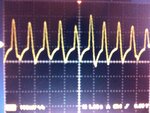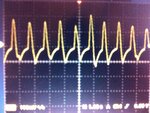patan.gova
Full Member level 3
Hello,
I am working to filter out the high frequency components above 2.3Hz using an active lowpass filter which consists of a OPA380 OP-AMP and to provide a gain of 101 as shown with in the attached image.I practically checked and everything working fine but the OP-AMP is consuming a current of 4ma when provided with a 3V voltage supply.
I will be feeding the active lowpass filter with a signal of 8mv and I need to amplify this signal for further reading of microcontroller's ADC while filtering the above mentioned frequency.
Can someone suggest
1.A Lower current consumption Op-amp and the gain should also be good.
2.what will be the maximum gain that should be used by an op-amp.

I am working to filter out the high frequency components above 2.3Hz using an active lowpass filter which consists of a OPA380 OP-AMP and to provide a gain of 101 as shown with in the attached image.I practically checked and everything working fine but the OP-AMP is consuming a current of 4ma when provided with a 3V voltage supply.
I will be feeding the active lowpass filter with a signal of 8mv and I need to amplify this signal for further reading of microcontroller's ADC while filtering the above mentioned frequency.
Can someone suggest
1.A Lower current consumption Op-amp and the gain should also be good.
2.what will be the maximum gain that should be used by an op-amp.

Last edited:


